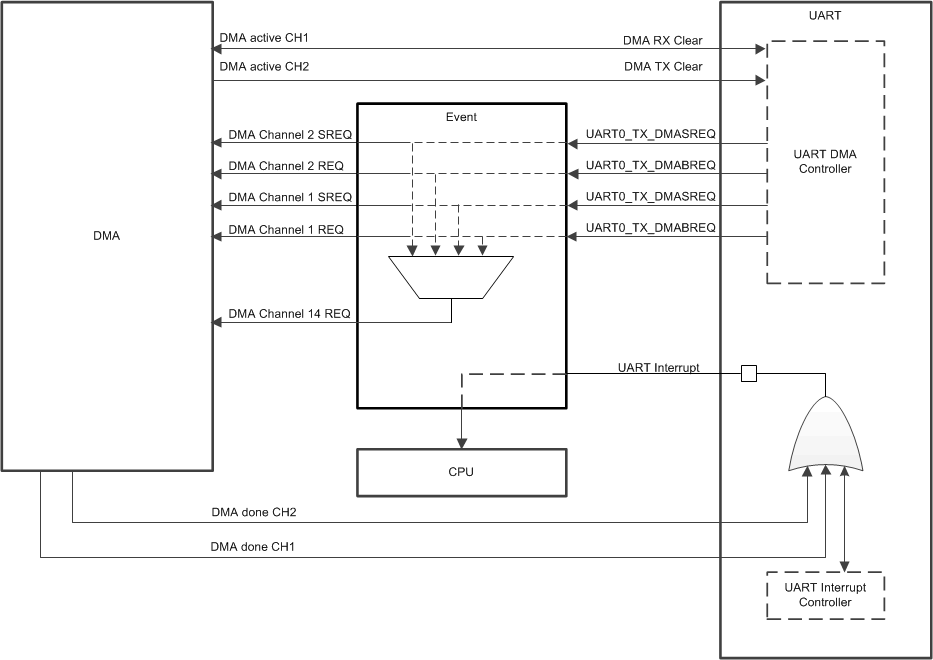SWCU192 November 2021 CC1312R7 , CC1352P7 , CC2652P7 , CC2652R7
22.5 Interface to DMA
The CC13x2x7 and CC26x2x7 devices provide an interface to connect to a DMA controller. Figure 22-3 shows the interface between the DMA and UART. This interface contains four DMA requests as outputs (RX Single, RX Burst, TX Single, and TX Burst). The DMA interface also has two DMA request clears as inputs (for clearing TX and RX DMA requests). Each DMA request signal remains asserted until the relevant DMA clear signal is asserted. After the DMA clear signal is deasserted, a request signal can become active again, if conditions are setup correctly. The DMA clear signal must be connected to the DMA active signal from the DMA module. This signal is asserted when DMA is granted access and is active. The DMA active signal is deasserted when the DMA transfer completes. Connecting the DMA active signal from DMA to the DMA request clear input of the UART module ensures that no requests are generated by the UART module while the DMA is active.
The burst transfer and single transfer request signals are not mutually exclusive, and both can be asserted at the same time. For example, when there is more data than the watermark level in the receive FIFO, the burst transfer request and the single transfer request are asserted.
The single and burst requests cannot be masked separately by the UART module and if corresponding DMA (RX or TX) is enabled, both of these requests are sent to the DMA. The DMA configuration selects either single or burst request as the trigger. All request signals are deasserted if the UART is disabled or if the relevant DMA enable bit (TXDMAE or RXDMAE) in the DMA Control Register (UART:DMACTL) is cleared.
 Figure 22-3 µDMA Example
Figure 22-3 µDMA Example